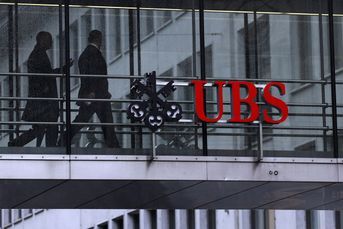As cash-back ETF hits funds market, signs of trouble appear

Index funds have exploded into a $7 trillion industry, but the sector now faces slower asset growth and declining revenue from fees.
There’s a whiff of desperation among asset managers in their seemingly never-ending war on fund fees.
Last week, one ETF upstart created a minor splash by doing what was once unthinkable — offering to pay investors to buy into its exchange-traded fund. That comes on the heels of eight fund providers — including JPMorgan Chase, Vanguard and BlackRock — all slashing fees in one of the industry’s most aggressive rounds of price cuts to date.
All told, it’s never been cheaper to invest in ETFs. But for some, it’s a sign that all is not well for the passive investing boom as average fees fall toward zero.
“It could actually backfire” for asset managers, said Eric Balchunas, an analyst at Bloomberg Intelligence.
After exploding into a $7 trillion industry, index funds are facing slower asset growth and declining fee revenue. Profit margins have come down and even the biggest firms have eliminated workers, reducing costs. Shares of publicly traded fund managers are well off their highs a year ago, even after rebounding in recent months. And questions about whether we’ve reached “peak passive” are starting to grow.
The price war “just shows you the intense competition, because you need a lot of assets to make it work,” says Susanne Alexandor, client portfolio manager at Cougar Global Investments, which oversees more than $1.2 billion.
The sub-zero fee giveaway by Salt Financial, which previously ran a single $11 million ETF, is widely seen as a marketing gimmick to drum up a little PR, get customers in the door and increase its assets under management. During the first year, investors will receive 50 cents for every $1,000 in a new low-volatility stock ETF — until it grows to $100 million. After a year, a management fee of 0.29%, or $2.90 per $1,000, could kick in.
The race to zero, however, is very real. Fidelity Investments jump-started the no-fee push in August by offering index funds for free. In February, SoFi said it would waive charges on two planned ETFs for the first year. Last week, JPMorgan started selling America’s cheapest-ever ETF for the princely sum of 20 cents for every $1,000 invested.
As the competition for investor money intensifies, the question is how much lower can asset managers afford to go, and should they?
“If the organic growth is going to stuff that makes no money, that’s where you see those margins coming down,” Mr. Balchunas said. “That’s what really scares” shareholders of these fund-management firms.
Price of success
In many ways, passive funds have become the victims of their own success. During the longest bull run for U.S. stocks on record, ETFs more than quadrupled their assets under management.
That rapid proliferation has come at a very literal price. On an asset-weighted basis, the average fee fell 38% to $2.10 per $1,000, in that span, according to the most recent data available from the Investment Company Institute.
BlackRock, Vanguard Group and State Street — the three dominant firms, which together oversee over 80% of the $3.8 trillion in U.S. ETFs — have led the way. More than 97% of flows into index funds last year went to those charging $2 or less. Vanguard, for example, attracted more than $4 billion to a stock ETF last week after making it the lowest-cost S&P 500 strategy.
As profit margins have shrunk, both BlackRock, the world’s largest asset manager, and State Street announced plans this year to dismiss workers to redirect resources and cut costs, respectively. Vanguard recently dropped its investment minimums to fend off rivals.
It hasn’t been any easier for the minnows in the ETF world. Financial advisers are often prohibited from buying funds that don’t meet minimum asset thresholds. To compete with the big boys, you need to climb over that bar. Increasingly, that means charging nothing or even paying investors outright.
‘Anti-competitive hurdles’
“There are anti-competitive hurdles that we’re trying to jump over,” said Alfred Eskandar, president and co-founder of Salt Financial.
Mr. Eskandar’s Salt and SoFi are gambling that investors will stick with them if they start charging fees.
In general, issuers can minimize the roughly $200,000 a year it costs to run an ETF by using an in-house index rather than licensing a more popular one. They could also lend out securities for extra income. Yet there are limits when the product itself generates no revenue.
A decade ago, Deutsche Bank’s European asset management unit started a pioneering no-cost stock ETF, but it ultimately raised its price five years later. Now, much of the debate is over how sustainable the ultra-low-cost model will be when the bull market finally ends.
“It does still cost something to manage the funds and to service the funds and distribute the funds,” said Noel Archard, global head of product for State Street’s ETF business. When it comes to the fee war, “there’s a logical bottoming-out point. We’re getting pretty close to that threshold.”
(More: Zero-fee ETFs are the elephant in the room at industry summit)
Learn more about reprints and licensing for this article.








